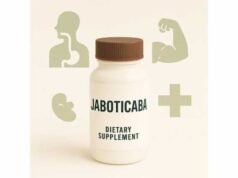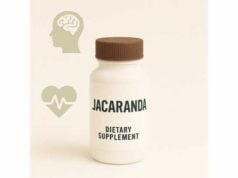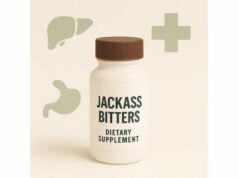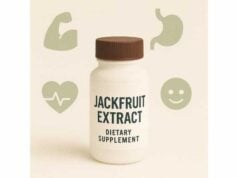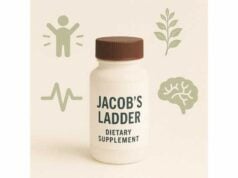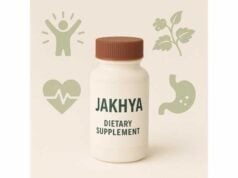
Jerusalem sage (Phlomis fruticosa) is a Mediterranean shrub in the mint family that people mostly know from gardens—silver-green leaves, sunny yellow flowers, and a drought-hardy build. Beyond landscaping, its leaves and flowering tops have a long history in folk teas across the region. Like many Lamiaceae herbs, Jerusalem sage contains polyphenols (for example, phenylethanoid glycosides such as verbascoside) and flavonoids (like apigenin and kaempferol) alongside essential oil constituents produced in tiny glandular hairs on the leaves. Early laboratory studies suggest antioxidant and antimicrobial actions, and exploratory models point to potential anti-inflammatory and neuroprotective effects. Still, human clinical data are limited, and no medical claims are warranted. If you are curious about it as a tea or a culinary herb, this guide explains what it is, how it is thought to work, practical ways to use it, sensible serving ranges, and safety guardrails—so you can make an informed, conservative decision about whether it fits your routine.
Essential Insights
- Polyphenol-rich leaves show antioxidant and antimicrobial activity in lab studies.
- Glandular leaf hairs produce volatile oils; phenylethanoid glycosides (e.g., verbascoside) are key non-volatile constituents.
- Typical tea preparation: 1–2 g dried leaf per 200–250 ml, up to twice daily; no standardized medicinal dose exists.
- Avoid if you are pregnant, breastfeeding, have a known allergy to mint family plants, or are on medications where added herbs could complicate management.
Table of Contents
- What is Jerusalem sage and how does it work?
- Proven and plausible benefits
- How to use Jerusalem sage daily
- Dosage, preparations, and titration
- Side effects, interactions, and who should avoid
- What the evidence says right now
What is Jerusalem sage and how does it work?
Jerusalem sage (Phlomis fruticosa) is a perennial shrub native to the eastern Mediterranean. It belongs to the Lamiaceae, the same family as Salvia and mint. The plant forms felted, gray-green leaves and whorls of golden flowers. In folk practice, the leaves and flowering tops have been brewed as an aromatic herbal tea.
From a chemistry perspective, two groups of compounds matter most for readers considering wellness uses:
- Non-volatile polyphenols. The leaves concentrate phenylethanoid glycosides such as verbascoside (acteoside) and leucosceptoside A, plus flavonoids including apigenin and kaempferol. These compounds are widely studied in the lab for antioxidant behavior (radical scavenging, metal chelation), enzyme modulation (e.g., α-amylase, cholinesterases in some assays), and effects on microbial growth dynamics. While in vitro data do not equal clinical outcomes, they help explain why traditional teas emphasize the leaf rather than the woodier parts.
- Volatile essential oil. Like other mints, Jerusalem sage produces essential oils in glandular trichomes (tiny secretory hairs). The oil profile varies with climate, soil, and plant part, but sesquiterpenes and other terpenoids are common themes across the genus. In plants, these molecules act as chemical signals and defenses; in test systems, they often show antimicrobial or enzyme-inhibiting activity at higher concentrations than one would get from a regular tea.
How might these constituents translate into effects you could feel? A practical, food-first framing helps:
- Antioxidant support in the gut lumen and at mucosal surfaces. Polyphenols can neutralize reactive species in test systems and may help modulate oxidative balance locally in the digestive tract.
- Gentle digestive comfort from warm, aromatic tea. Many readers use mint-family infusions after meals for perceived ease and calm—less about specific actives and more about a warm, low-risk ritual with pleasant bitterness and aroma.
- Everyday microbial hygiene in foods and infusions. The antimicrobial effects seen in the lab are typically at higher concentrations than tea, but they align with the long-standing culinary use of aromatic herbs to flavor and help preserve foods.
Important limits: Jerusalem sage is not the same plant as culinary sage (Salvia officinalis), and the evidence base is much smaller. If you want a clinically established herb for specific indications, stick with better-studied options. If you are exploring Jerusalem sage for taste and tradition, the goal is modest—an aromatic tea with plausible antioxidant and digestive-friendly properties and a generally conservative safety profile when used in small culinary amounts.
Proven and plausible benefits
Digestive comfort and a pleasant meal ritual. Warm, mildly bitter aromatic teas are a common after-meal practice across the Mediterranean. Jerusalem sage fits that culinary tradition well. The benefit here is experiential: aroma, warmth, and a pause after eating. For some people, that translates into a feeling of lighter digestion. The mechanism is not unique—mint-family volatiles, gentle bitterness, and simple hydration likely all contribute.
Antioxidant behavior in lab systems. Extracts of Jerusalem sage leaves, especially alcohol or hydroalcoholic extracts rich in polyphenols, consistently show radical-scavenging and reducing activity in test tubes. That is not a disease treatment, and doses in the lab are often higher than in tea. However, when people aim to build an antioxidant-rich diet, they usually do it with a pattern—colorful foods, legumes, herbs, and teas—rather than one high-dose supplement. Jerusalem sage can be one small part of that pattern.
Antimicrobial and enzyme-target signals (preclinical). In vitro studies on Phlomis fruticosa leaf extracts report growth inhibition against several bacteria and fungi under lab conditions, plus inhibition of enzymes like α-amylase or microbial virulence factors in some assays. These data are exploratory. You should not expect tea-strength preparations to sterilize the gut or replace hygiene. Still, they support the rationale for culinary use and make the herbal infusion an interesting, low-commitment choice for variety.
Neuroprotective and anti-inflammatory signals (preclinical). Leaf extracts have shown protective effects in neuronal cell models and anti-inflammatory activity in ex vivo colon tissue models. These are bench and ex vivo findings, not human outcomes. They suggest targets worth studying—oxidative pathways, inflammatory mediators—but they do not justify therapeutic claims.
Botanical nutrition and substitution value. If you are trying to reduce sweetened beverages, an unsweetened herbal tea is often a helpful replacement. Replacing a 150–200 kcal drink with a near-zero-calorie infusion once per day has a gentle, cumulative effect over time. Jerusalem sage offers the sensory satisfaction many people want from an evening or afternoon hot drink, without caffeine.
What to expect in real life. Most people who enjoy Jerusalem sage do so because they like the flavor and the way the cup fits into their day. If you notice any benefit, it will likely be subtle: a comfortable stomach after a meal, a satisfying swap for a sugary drink, or the feeling of a calming ritual. If you are hoping for strong, targeted medical effects, this is not the herb to rely on; consider better-studied plants and speak with your clinician.
How to use Jerusalem sage daily
Choose the right material. Use dried leaves and flowering tops from a reputable herb supplier, ideally whole or cut, with a green scent and no musty notes. If you grow the shrub, harvest young, healthy leaves before peak flowering; dry in a shaded, ventilated area, then store in an airtight container away from light and heat.
Brew simply. Jerusalem sage tea works best as a straightforward infusion:
- Standard cup: 1–2 g dried leaf per 200–250 ml just-off-boil water.
- Time: 8–12 minutes covered, then strain.
- When: after meals for a pleasant aromatic finish, or mid-afternoon as a warm, non-caffeinated drink.
Improve flavor and mouthfeel. Jerusalem sage is aromatic yet gentle. To round out the cup:
- Add a strip of lemon peel or a few fennel seeds.
- Blend 50:50 with lemon balm or spearmint for a brighter top note.
- If you prefer a more savory note, steep with a small slice of fresh ginger.
Culinary uses. Fresh leaves are soft and slightly woolly. Finely chop and use sparingly:
- Scatter a pinch over roast vegetables at the end of cooking.
- Add a few leaves to roasted chicken pan juices, then strain.
- Infuse olive oil gently with a sprig and a strip of lemon peel; use as a finishing oil.
Make it a habit without overdoing it. Herbal teas shine when they are part of a routine. One or two cups per day is a reasonable ceiling for most adults using Jerusalem sage as a beverage. Rotate with other herbs across the week if you enjoy variety.
For sensitive stomachs. If strong herbal infusions sometimes upset your stomach, start with half-strength: 0.5–1 g leaf per cup, shorter steep (5–7 minutes), and take with a light snack. Increase gradually as you learn your tolerance.
What not to expect. Jerusalem sage is not a replacement for medical therapy, and it has not been studied in clinical trials for specific diseases. Do not rely on it to treat inflammation, infections, cognition, or blood sugar. If you need targeted help, work with your healthcare team.
Dosage, preparations, and titration
There is no standardized medicinal dose. Unlike well-monographed herbs with formal dose ranges, Jerusalem sage lacks widely accepted clinical dosing. The following guidance reflects conservative, culinary-level use:
- Tea (infusion): 1–2 g dried leaf per 200–250 ml water, steeped 8–12 minutes, up to 2 cups daily. If you want a milder cup, use 0.5–1 g or shorten the steep.
- Blends: Combine 50–75% Jerusalem sage with 25–50% gentler partners (lemon balm, spearmint) to soften the profile while keeping the aromatic character.
- Culinary: A few fresh leaves finely chopped per serving; in infused oil, use one short sprig per 250 ml and remove after 24–48 hours.
Extracts and tinctures. Commercial extracts of Phlomis fruticosa are uncommon. If you encounter them, check that the product clearly identifies the species and plant part. Because standard strengths are not established, a cautious approach looks like this:
- Fluid extract (if available): Begin at the low end of the manufacturer’s serving range, typically 0.5–1 ml once daily, and do not exceed the labeled maximum.
- Dry extract (capsules): If labeled as a leaf extract, start with the smallest marketed serving and evaluate tolerance for a week before considering any increase.
Titration tips.
- Start with one cup daily for a week.
- If well tolerated and you enjoy it, add a second cup on several days each week.
- If you notice digestive discomfort, step back to your last comfortable level or try a milder blend.
Timing. Many people enjoy Jerusalem sage after lunch or dinner. If you are sensitive to fluids near bedtime, finish the last cup at least 2–3 hours before sleep. If you take medications that should not be mixed with herbs at the same time, separate your cup by at least 2 hours unless your clinician advises otherwise.
Who should stick to culinary amounts only. If you are pregnant or breastfeeding, on multiple prescription drugs, or managing chronic conditions (for example, liver disease, kidney disease, or autoimmune disease), do not exceed a small culinary cup unless your care team agrees it is appropriate for you.
Side effects, interactions, and who should avoid
Common tolerance. In small culinary amounts (one or two cups of tea), Jerusalem sage is generally well tolerated for most adults. The main complaints at stronger infusions are mild digestive upset or an aftertaste some people find resinous.
Allergy and sensitivity. Jerusalem sage belongs to the mint family (Lamiaceae). If you have a known allergy to mint-family herbs, exercise caution or avoid. Rarely, people report oral itching or mild skin irritation from handling fresh leaves; wearing gloves when pruning prevents this.
Medication timing. Herbs can bind or slow the absorption of some oral drugs. As a simple rule, separate significant herbal infusions from critical medications by at least 2 hours. If your drugs require fasting or precise timing, follow your prescriber’s instructions and skip the herb near those doses.
Pregnancy and breastfeeding. Because rigorous safety data are lacking, conservative guidance is to avoid Jerusalem sage beyond culinary amounts during pregnancy and lactation.
Children. For kids, prefer established pediatric herbs and avoid Jerusalem sage unless a pediatric clinician or qualified herbal practitioner specifically recommends it.
Autoimmune conditions and surgery. If you have autoimmune disease or you are scheduled for surgery, discuss any herbal plan with your care team. Stop non-essential herbs 1–2 weeks before procedures unless your surgeon says otherwise.
Driving and drowsiness. Jerusalem sage is non-sedating for most people. If a new herb ever makes you feel drowsy or “off,” do not drive or use machinery until you know how you respond.
When to seek medical advice first.
- You are pregnant or breastfeeding.
- You use anticoagulants, antiplatelets, immunosuppressants, or narrow-therapeutic-index drugs.
- You have significant liver or kidney disease.
- You have a history of herb-induced reactions.
Bottom line on safety. Treat Jerusalem sage like a gentle culinary herb. Keep servings modest, listen to your body, and loop in your clinician if you take prescription medications or manage chronic conditions.
What the evidence says right now
Chemistry is becoming clearer. Recent analytical work on European populations of Phlomis fruticosa has mapped the main leaf constituents, with particular attention to verbascoside, leucosceptoside A, apigenin, kaempferol, and several iridoids. This helps standardize future studies and explains why polyphenol-driven antioxidant signals are common in test assays.
Glandular hairs and essential oils matter—but vary. Reviews of Phlomis species show that glandular trichomes are the factories for essential oils, and that oil composition varies across species, habitats, and plant parts. That variability makes it hard to generalize “the” oil profile or claim consistent oil-driven effects from unstandardized teas. For everyday users, the takeaway is simple: expect aroma and mild pungency, not a fixed therapeutic profile.
Preclinical signals are promising yet preliminary.
- Antioxidant and antimicrobial: Hydroalcoholic leaf extracts often demonstrate radical-scavenging and reducing power, and inhibit growth or virulence traits of some microbes in vitro.
- Anti-inflammatory and tissue models: Ex vivo colon tissue studies show modulation of inflammatory markers; these findings justify more research but do not equate to clinical benefit.
- Neuroprotective cell models: Leaf extracts have shown protective effects in neuronal cell systems and a pro-oxidant effect against a glioblastoma line in the lab—an intriguing differential response that highlights dose, context, and cell-type specificity.
What is missing. Randomized controlled trials in humans that test Jerusalem sage tea or standardized extracts are not yet available for clear, clinical endpoints. Until those exist, responsible guidance keeps expectations realistic and emphasizes culinary-level use.
Practical implication. If you enjoy the flavor and want a gentle, plant-forward habit, Jerusalem sage can be part of a rotating tea routine. If you are seeking clinically validated effects for a specific condition, choose herbs and strategies with established human evidence and use Jerusalem sage, at most, as an enjoyable extra.
References
- Phytochemical analysis and chemophenetic evaluation of Phlomis fruticosa L 2025 (Phytochemistry)
- Chemical profiling, antimicrobial, anti-enzymatic, and cytotoxic properties of Phlomis fruticosa L 2021 (Analytical and Bioactivity Study)
- Glandular Trichomes and Essential Oils Variability in Species of the Genus Phlomis L.: A Review 2024 (Review)
- Phlomis fruticosa L. exerts in vitro antineurodegenerative and antioxidant activities and induces prooxidant effect in glioblastoma cell line 2022 (In Vitro Study)
- Review of Studies on Phlomis and Eremostachys Species (Lamiaceae) with Emphasis on Iridoids, Phenylethanoid Glycosides, and Essential Oils 2021 (Systematic Review)
Disclaimer
This guide is educational and does not substitute for personalized medical advice, diagnosis, or treatment. Do not use Jerusalem sage to manage any disease without speaking with a qualified healthcare professional. If you are pregnant, breastfeeding, allergic to mint family plants, scheduled for surgery, or taking prescription medications, consult your clinician before using this herb. If you experience any adverse reaction, stop use and seek medical care.
If this article helped you, we would appreciate your support—please share it on Facebook, X (formerly Twitter), or your preferred platform, and follow us for future evidence-informed guides.

